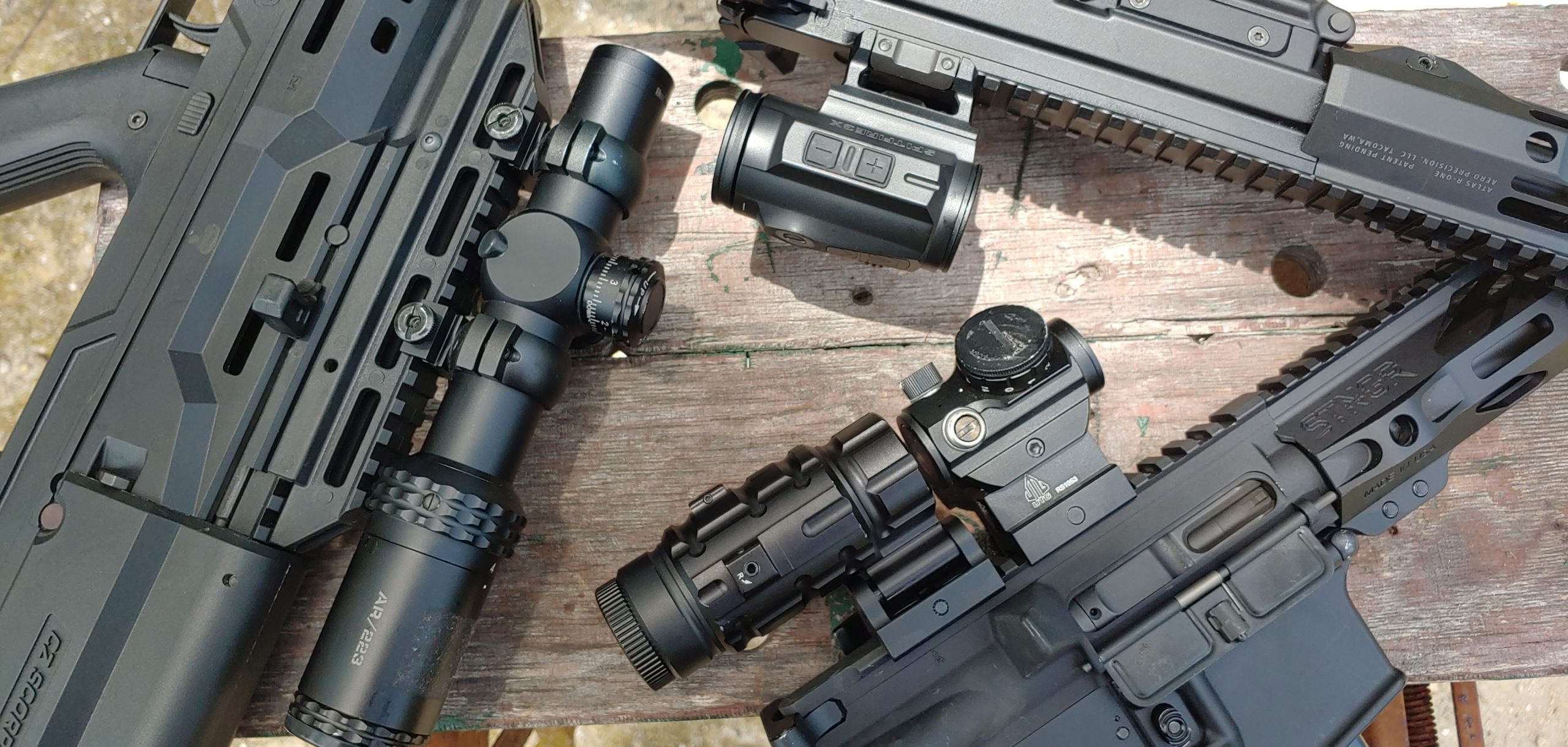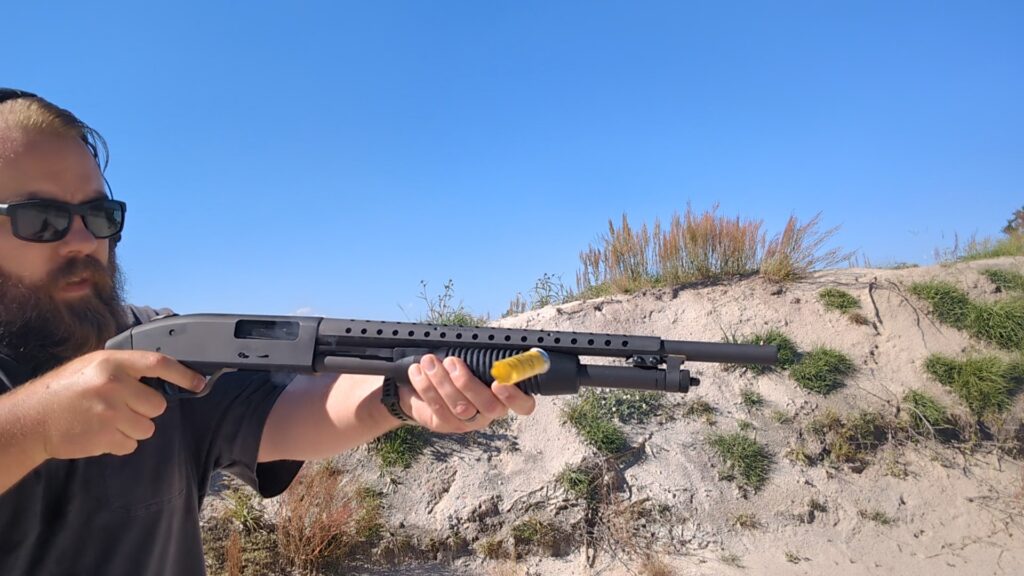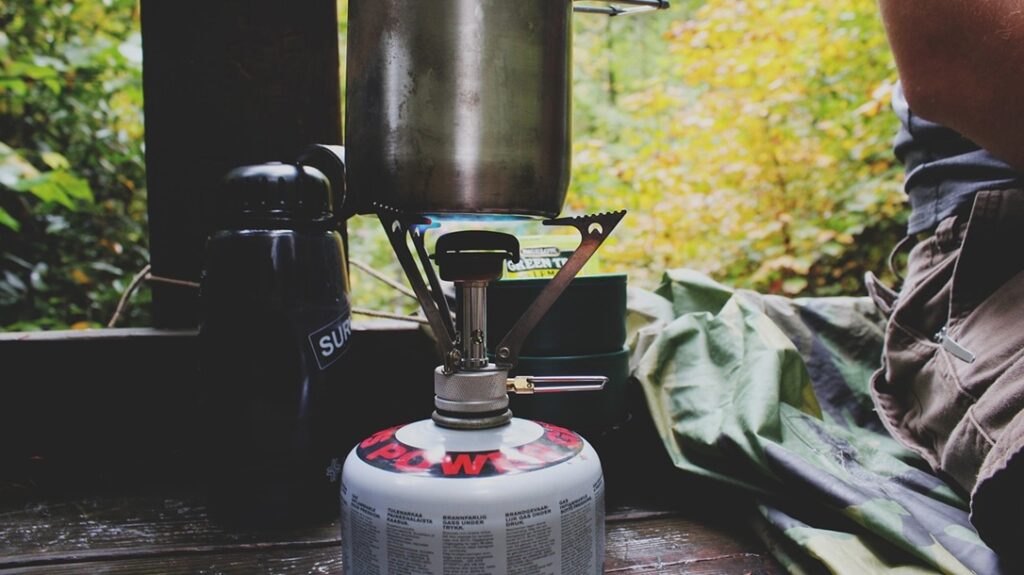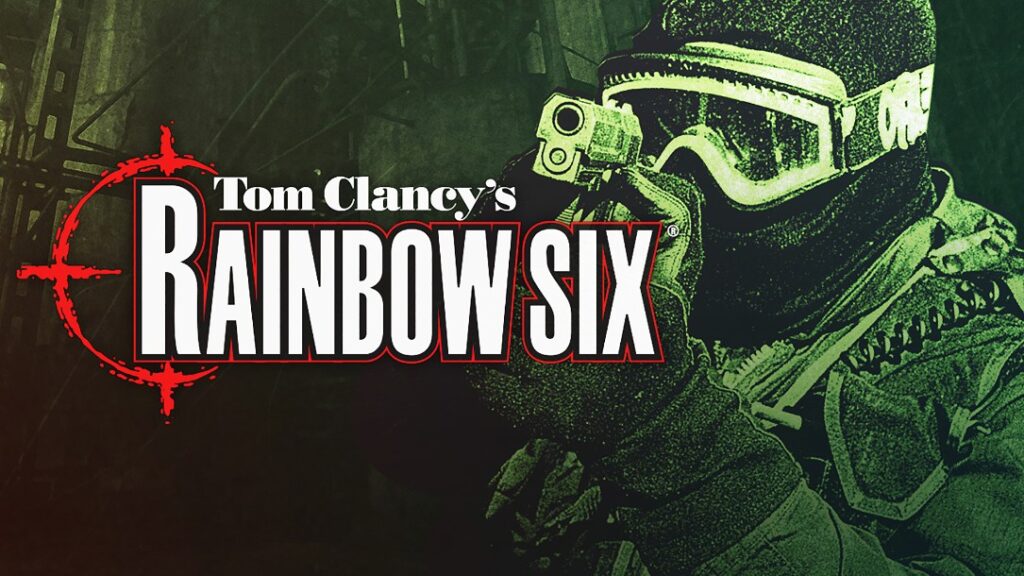Pistol caliber carbines, and by extension braced pistols, remain a popular choice for the everyday shooter. Why not? They offer shooters a cheap [relatively] source of ammo combined with the control and accuracy of a carbine in a pistol platform. They are easy to suppress, accepted at most ranges, and fun to shoot. The prevailing thoughts on PCC optics have always been a simple red dot.
Pistol calibers offer a limited range compared to rifles, and a red dot should do the trick. I agree; red dots work extremely well on PCCs. However, the more I thought about it, the more I started thinking about low-powered optics on PCCs.
Why Magnified PCC Optics?
Well, this isn’t necessarily about inside-the-house self-defense, but competition and external use of a rifle. A suppressed PCC makes a lot of sense if you have a fox in the hen house or some other pest that needs removal. Competitive PCC matches also often involve small targets at various ranges.
Advertisement — Continue Reading Below
In both situations, a small target needs to get hit. Be it a pest or a popper. Here is where low-powered PCC optics shine. A PCC is largely a 50 to a 100-yard rifle, and at those ranges, a low-powered optic makes everything easier to see and hit. Like any other weapon, a magnified optic improves your ability to see the target as well as hit the target. Low-powered PCC optics could extend your effective range as well and bring out to 100 to 200 yards.
Yes 9mm will go 200 yards -> watch.
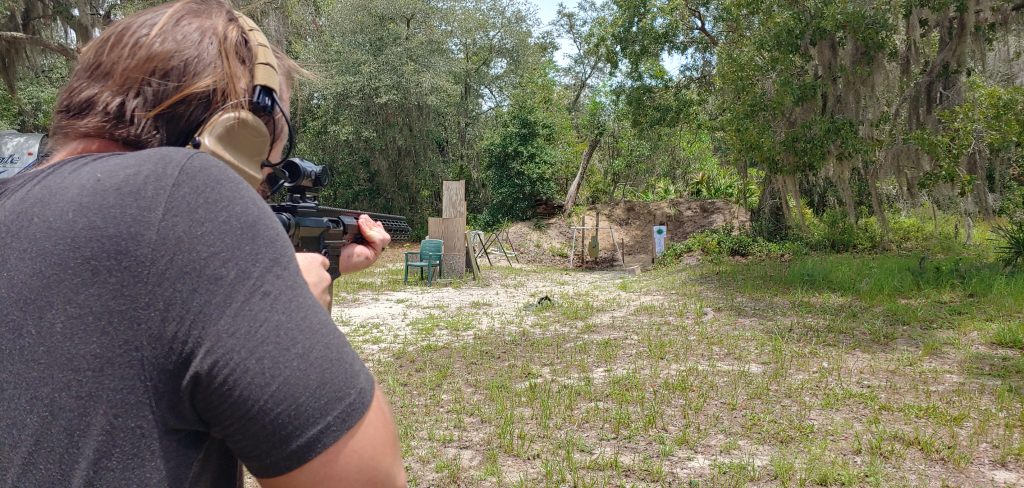
Advertisement — Continue Reading Below
I gathered three of the more common configurations of low-powered optic and took them for a spin on three different PCCs. These optics were an LPVO, a 3X prism, and a combination of a red dot and a 3X magnifier. The optics were the Vortex Spitfire HD Gen 2, a Bushnell TRS 25 with UTG magnifier, and a Bushnell AR optics 1-4X LPVO.
My theory was that optics in the 2 to 4 power range would be perfect for PCCs. In that space, there are not a ton of options geared at PCCs, so I used what I had on hand. In fact, Primary Arms is the only company I know that makes a magnified optic with a PCC-specific reticle.
Close and Long Range PCC Optics
PCCs work extremely well at close range, so you don’t want an optic that reduces your ability to engage at close range. As part of the testing procedure, I tried the optics at 15, 25, 50, and 100 yards. I wanted to ensure the optics worked at both close, moderate, and long ranges in relation to a PCC.
Advertisement — Continue Reading Below

I also utilized small targets at close ranges, 15 and 25 yards. The small target being a 4-inch gong and went back to the idea of popping small targets at close ranges with extreme precision.
Red Dot and Magnifier
Close Range Use – The Red dot and Magnifier combo excelled at close range, obviously. Pop the magnifier out of the way, and boom, you’ve got the speed of a red dot again. The versatile nature of these PCC optics makes it easy to transition to a magnified view to kill that four-inch gong.
Advertisement — Continue Reading Below
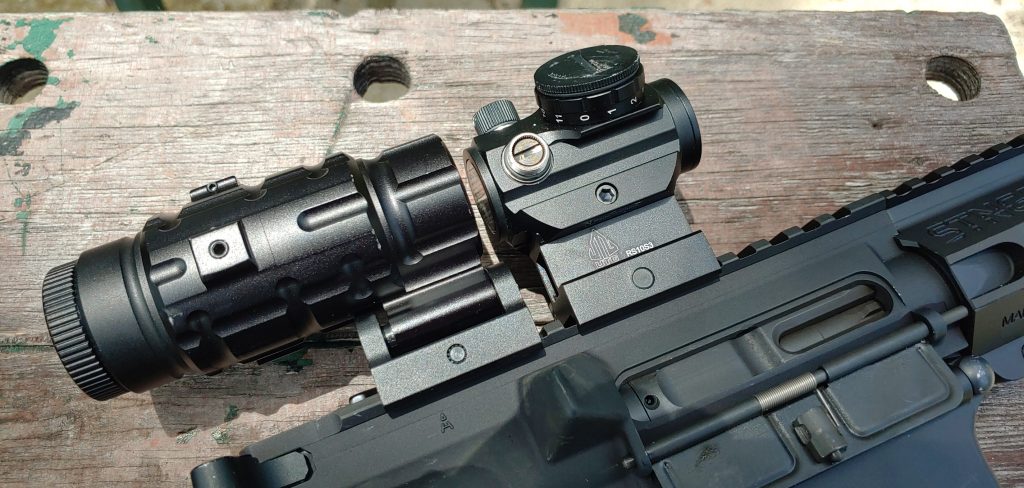
Moderate and Long Ranges – The magnifier ruled the roost and got me on target with the larger targets at 25 and 50 yards. Out to 100 yards, I dropped rounds on a man-sized IPSC target with relative ease. That’s a lot of drop or a 9mm round, so I had to guestimate the drop without any aids due to the simplicity of a red dot reticle.

Advertisement — Continue Reading Below
Final Thoughts – A red dot and magnifier setup provides a versatile option for PCCs. It does allow for that ease of swapping instantly between red dot and magnifier optic. The simplistic reticle doesn’t do much with the foot of drop a 9mm experiences. Two PCC optics do provide two failure points and a lot of rail estate taken up, especially on something with a 4″ barrel potentially.
Prism Sight
Close Range Use – A fixed power 3X prism sight requires a bit of practice to be fast at close ranges. You need a bright daylight reticle, and the bigger the illuminated portion, the better. With the Spitfire Gen 2 HD, I had no issues dropping lead into close range targets, although it’s not as fast or as intuitive as a dedicated red dot.
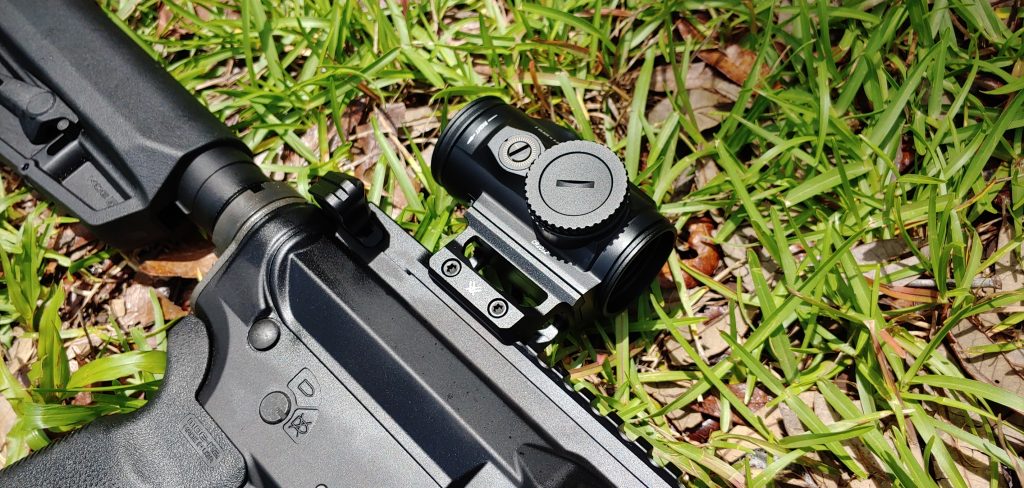
Advertisement — Continue Reading Below
On slow fire shots on the 4-inch gong, I had no issues ringing it over and over. It should be mentioned that the reticle provided a point of aim to compensate for mechanical offset. It allowed for super-accurate shots at close ranges.
Moderate and Long Range – The 3X magnification made it easy to hit a wide variety of targets at 50 yards. This includes the 6-inch gong with relative ease. Out to 100 yards, the MOA reticle made it easy to estimate for roughly 12 inches of bullet drop and constantly dinged steel at 100 yards.
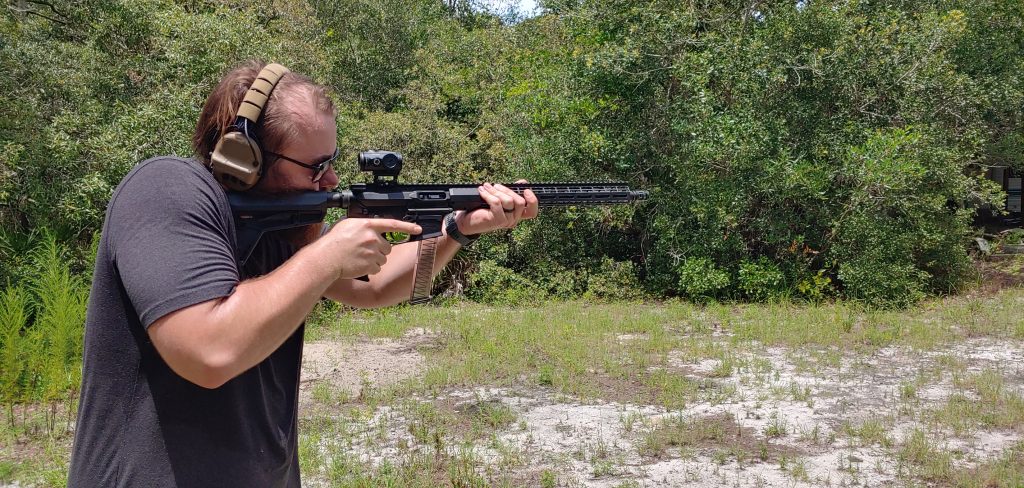
Advertisement — Continue Reading Below
Final Thoughts – The prism provides a very lightweight and compact option for magnified optics. Some PCCs don’t offer much rail space, and the prism provides a simple option. Also, the reticle is rather handy for both extreme close range and long-range use.
LPVO
Close Range Use – Setting the dial down to 1X made it relatively fast and easy to get on target. The eye box isn’t super forgiving compared to a red dot, but consistent use made it easy to hit the target rapidly. Zooming in on that 4-inch gong was simple but not as fast as the prism or magnifier PCC optics. The reticle provides a good estimate to compensate for mechanical offset as well.
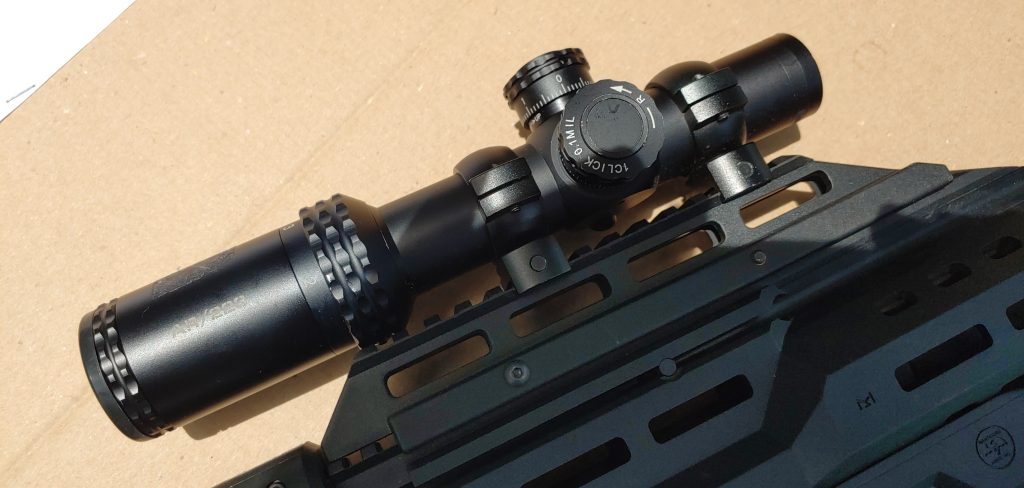
Advertisement — Continue Reading Below
Moderate and Long Range – At 50 yards, I dominated a variety of gongs and got more hits on the 4-inch gong at this range than with any other optics. At 100 yards, I used the MOA reticle to estimate for drop and landed plenty of rounds on target without difficulty.
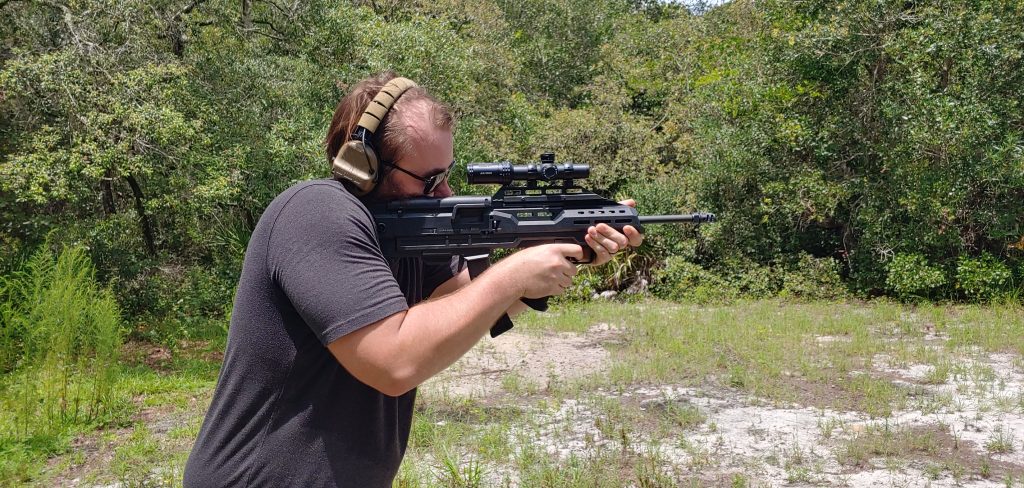
Final Thoughts – The LPVO provided a versatile option for both short and long-range use. I think an LPVO utilized for this task should have a massive illuminated reticle, like the Accupoint 1-4X with a triangle reticle. Being able to cycle through magnification settings is nice, but I really only dialed into 1X or 4X. LPVOs don’t have as forgiving of an eye box and are rather large for a PCC, similar to the dot/magnifier.
The World of PCC Optics
After lots of shooting and testing, I don’t think I’d write off magnified PCC optics. Personally, I preferred the prism option for its small size and weight combined with a versatile reticle combination. I want to get my hands on the 2X Primary Arms prism with the 9mm reticle. However, the Vortex Spitfire HD Gen 2’s 3X was rather nice at longer ranges.
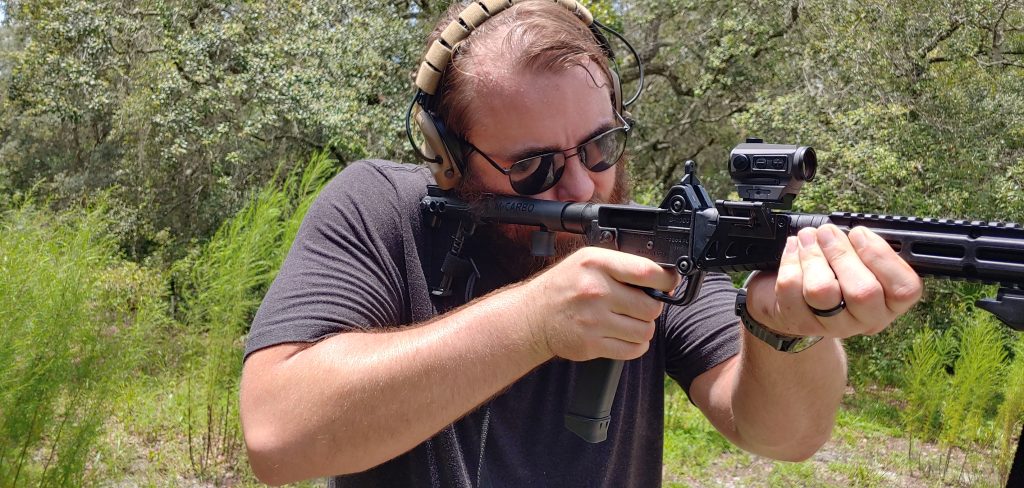
I think good magnified PCC optics should have a reticle that allows for drop estimation and compensates for mechanical offset. Like most rifles, a magnified optic does provide some substantial advantages over a plain red dot. For a defensive PCC, I think a red dot is easily the best choice, but for other tasks, magnified optics do wonders.
